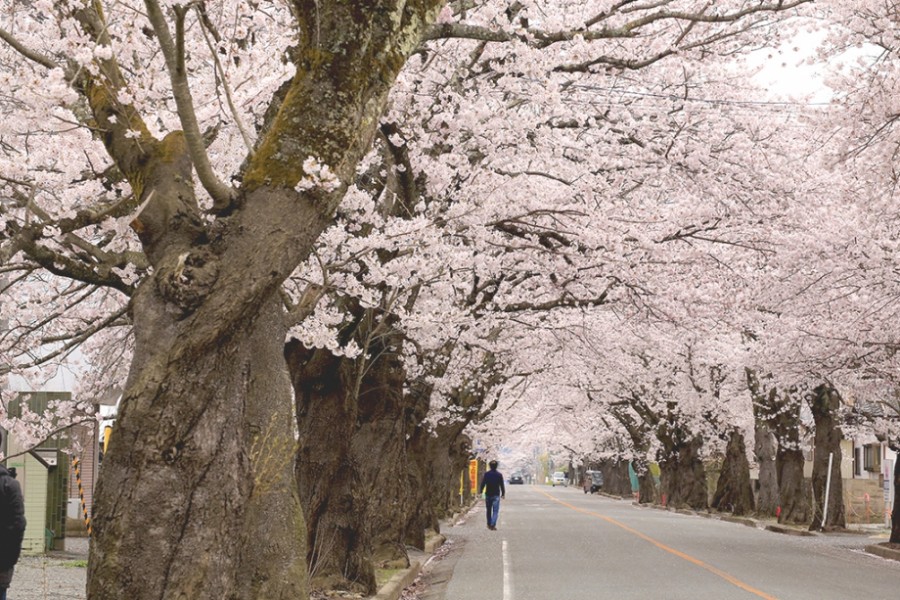
Yonomori Sakura
Approximately 1,500 cherry trees of the quintessential Japanese Somei Yoshino variety create a beautiful tunnel of cherry blossom for visitors to pass through. Many of these trees are over 100 years old.
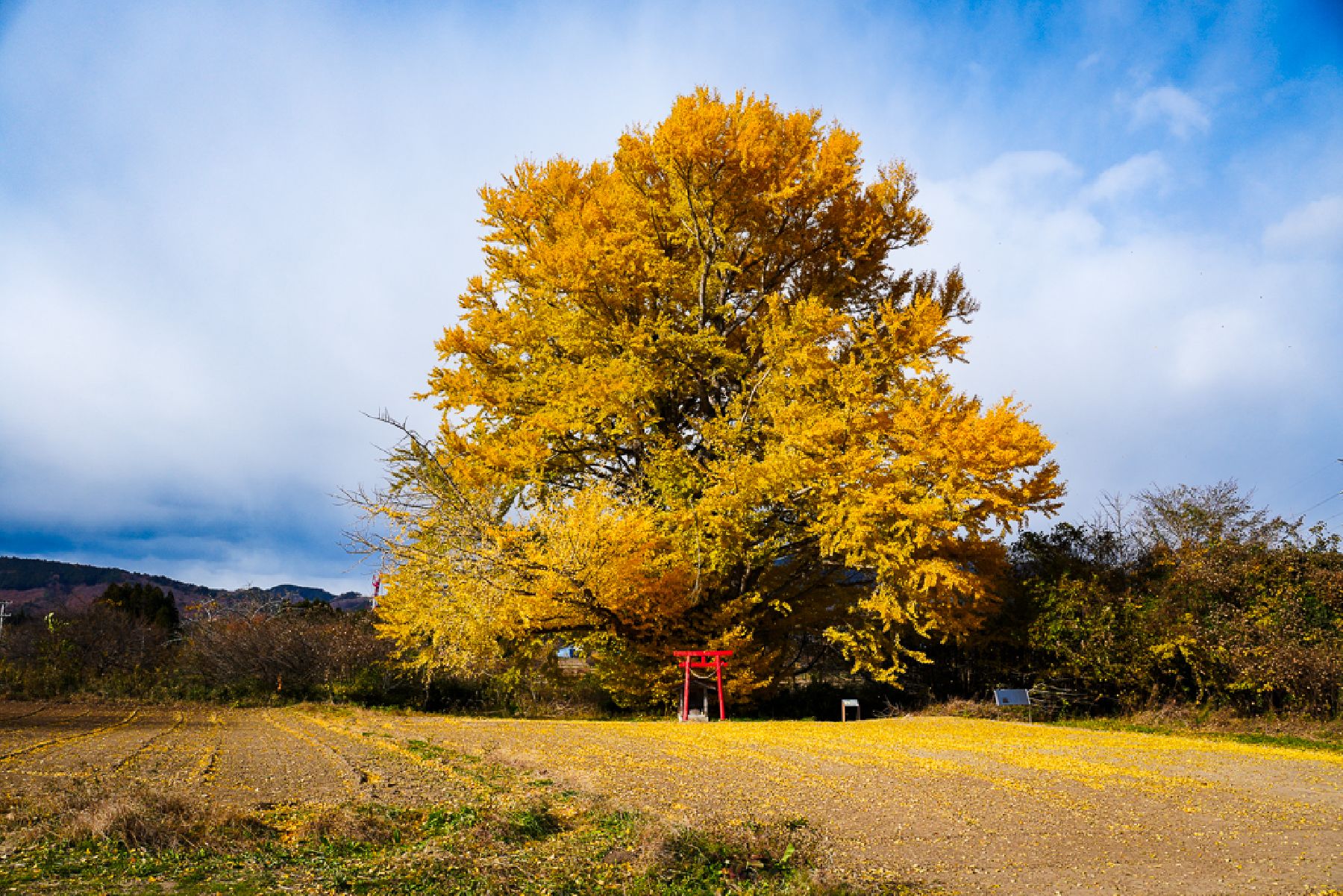
Listed as a prefectural natural monument, the striking sight of the red torii gate at the foot of Shirahata Gingko Tree brings photographers and sightseers from up and down the eastern coast of Tohoku.
It's also known as the 'upside-down gingko', owing to a legend that warlord Date Masamune planted a gingko whip upside down in the ground during an attack on Shinchi in the late 1500s.
The best time to see the vibrant yellow leaves is usually the last week of November or first week of December.
Although there is no parking lot specifically, there is space for cars to park on the green within sight of the tree.
| Best Season |
|
|---|---|
| Parking | Free |
| Access | Hakubo Komagamine, Shinchi, Soma District, Fukushima 979-2611 View directions |
|---|---|
| Getting there | 1 hour drive east from Fukushima City 25min walk from Komagamine Station (Joban Line) |

Approximately 1,500 cherry trees of the quintessential Japanese Somei Yoshino variety create a beautiful tunnel of cherry blossom for visitors to pass through. Many of these trees are over 100 years old.
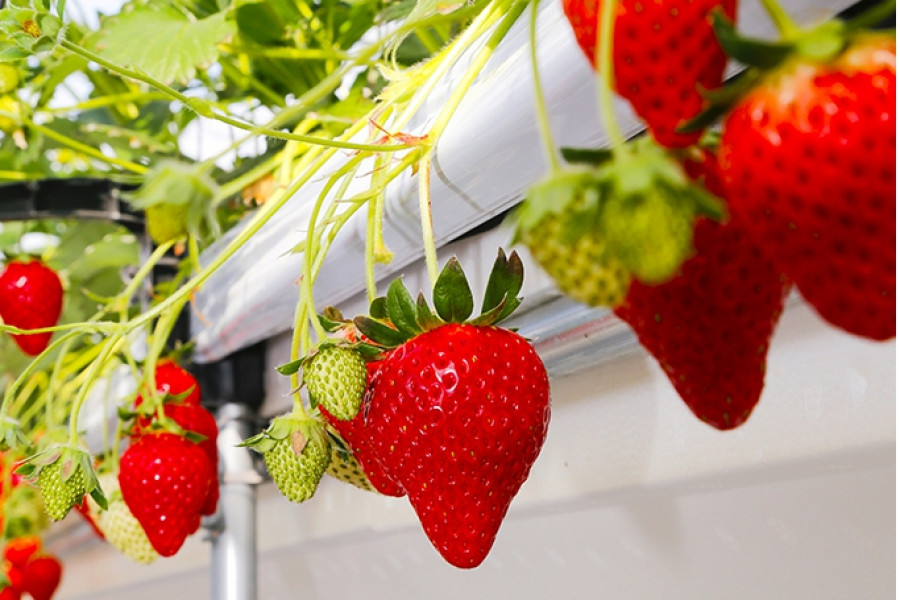
Pick your own strawberries at one of the 11 farms within walking distance of the Wada Strawberry Tourism Association office. Strawberry picking season is from December to mid-May. Visit Wada Strawberry Tourism Association during this time to take part in an all-you-can-eat 30 minute strawberry picking experience!
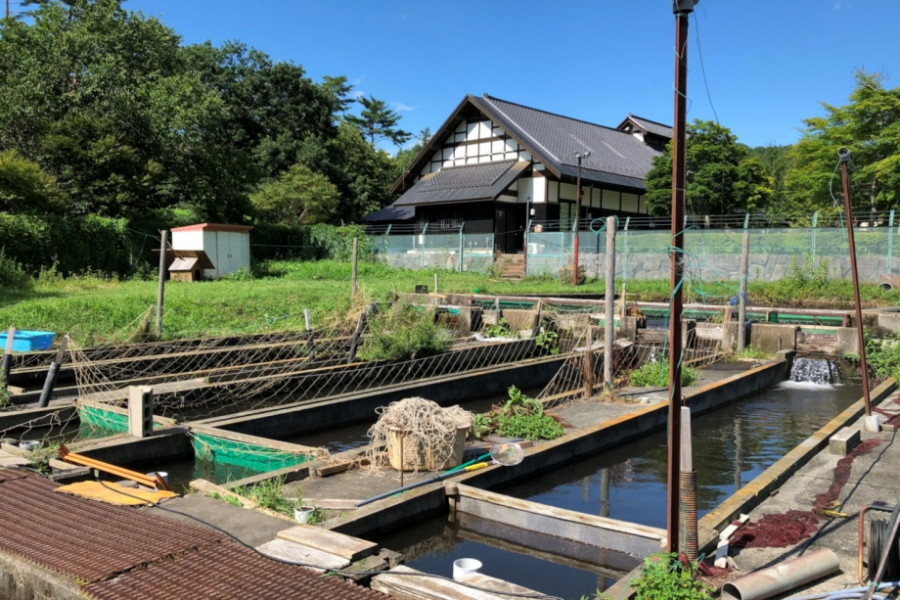
Iwana no Sato is well-suited for family trips! Try out fishing ‘Iwana’ (charr fish), and enjoy the picturesque scenery of Japanese-style gardens, watermills, & other traditional Japanese architecture. There is an onsite restaurant, areas for having a BBQ, and even accommodation too. Iwana no Sato is close to Tenzan Bunko and Café Amazon, popular spots among tourists visiting Kawauchi Village.
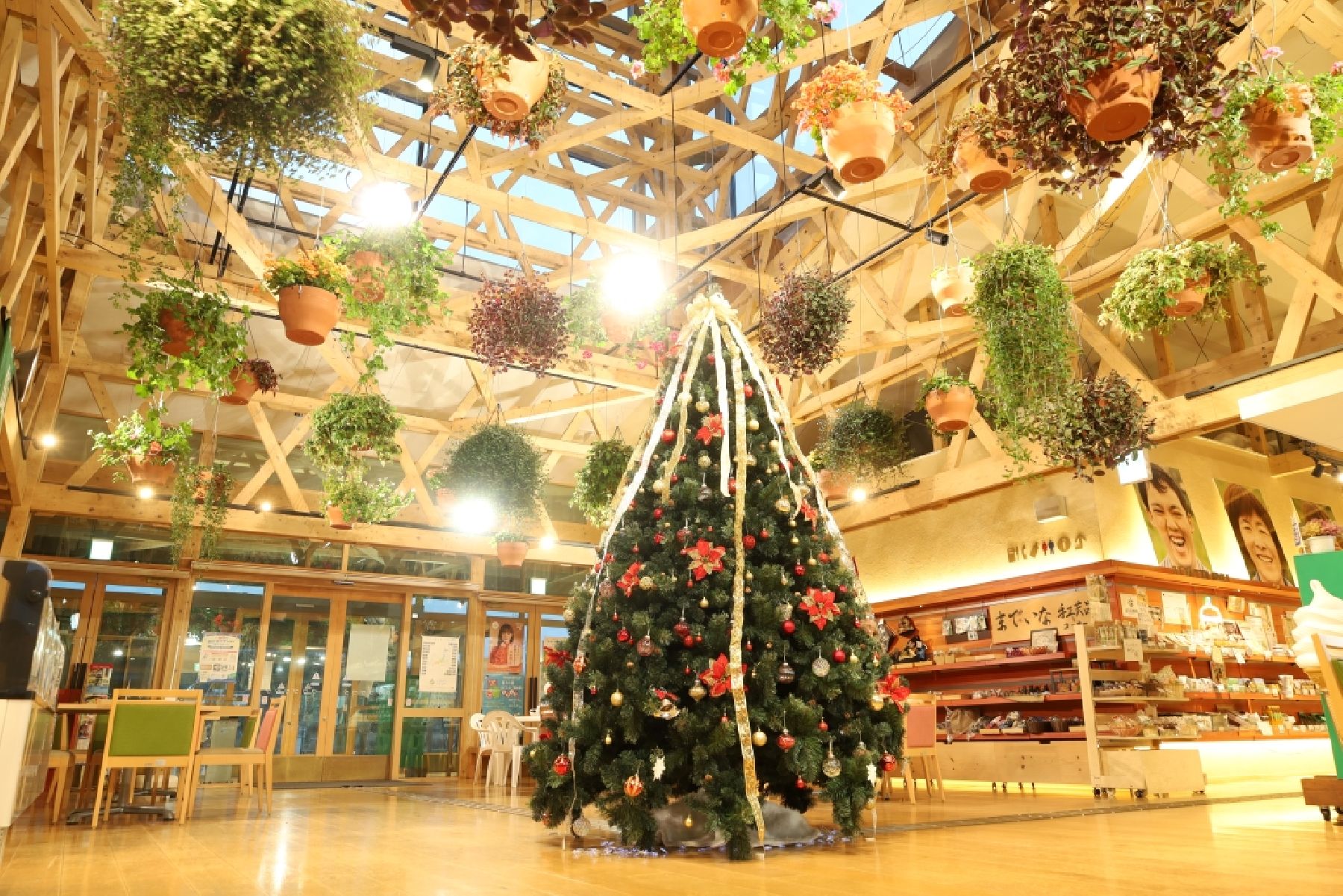
Madeikan is an excellent stopping point when heading east to the Soma region thanks to its clean, modern design and array of services. Like many roadside stations, it is outfitted with two restaurants in a food court style where dishes are bought using nearby ticket machines. There is a good-sized market selling local produce, as well as a souvenir shop selling goods and crafts.The term 'madei' is a local term that depicts the slow and thoughtful way of life in Iitate Village. As such, the roadside station is intended as a place where people can unwind and take their time.When you enter the main hall of Madeikan, you're greeted by a stunning display of hanging flowers in the rafters - growing these flowers is the main industry of the village and a source of pride. The display changes season to season, meaning you're likely to see a different arrangement every time you visit.The service station is popular in summer time, when nearby sunflower fields are in full bloom, then again in winter time for its Christmas illuminations, which take place in the park behind the main building. Lights are usually turned on around 4:30pm, when it begins to get dark.
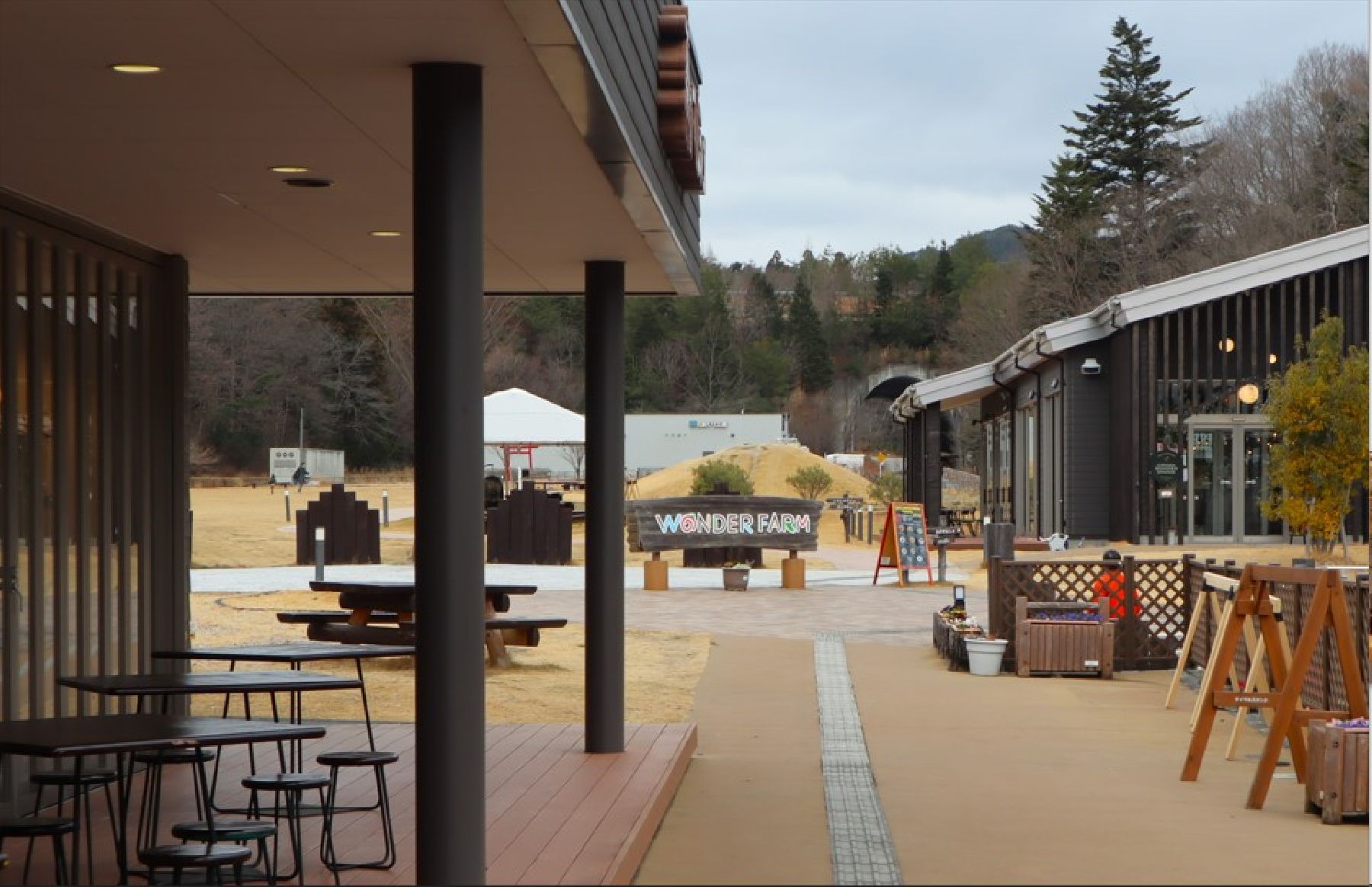
Wonder Farm, which covers the same area as 3.5 football pitches, includes a local products shop, restaurant, BBQ site, and tomato-picking experience!Mori no Kitchen (the restaurant inside Wonder Farm) is stylish, comfortable, and serves great food. The delicious pizzas and tomato curries are particularly popular!
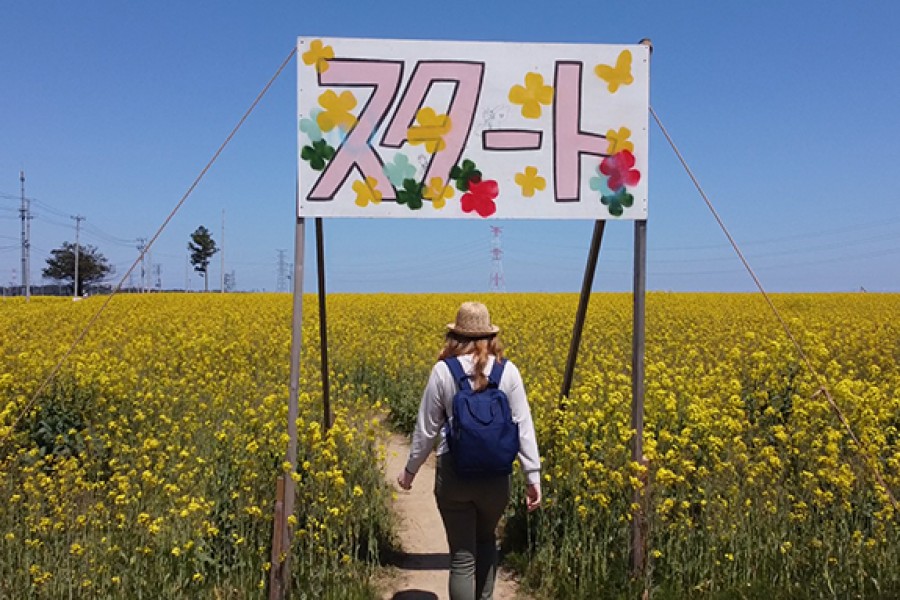
A massive field of nanohana flowers that first bloomed in Spring 2012, bringing great joy to the community. Since 2013 to today, huge flower fields and mazes are organized for the public to come and enjoy entirely for free. Children can receive prizes for completing the maze and visitors of all ages are encouraged to walk through the maze and have fun. Takayuki Ueno is a local farmer and creator of the Nanohana Flower Maze, planting the first flowers here in November 2011; eight months after the Great East Japan Earthquake. Click here to read more about his inspiring story.
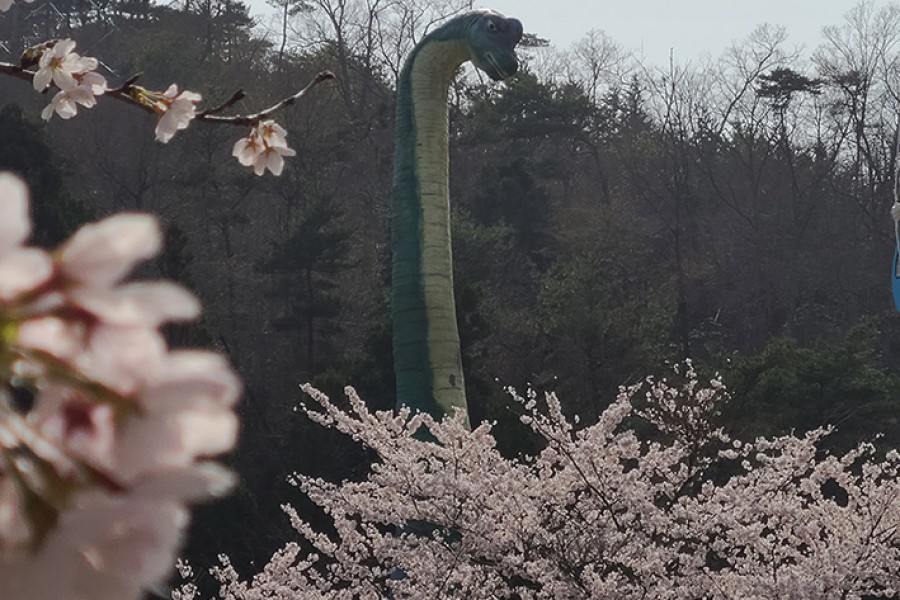
Kairyu no Sato Center Theme Park is a dinosaur themed theme park in Iwaki city. Here there are three rides as well as some unique dinosaur statues including a huge long-necked dinosaur. Around late March to early April is the best time to visit if you want to see the unique sight of dinosaurs surrounded by cherry blossoms. Iwaki is well known for its excavation of fossils and most notably the discovery of the Futabasaurus dinosaur. You can learn more about the mining history of Iwaki at the Horuru: Iwaki Coal and Fossil Museum.
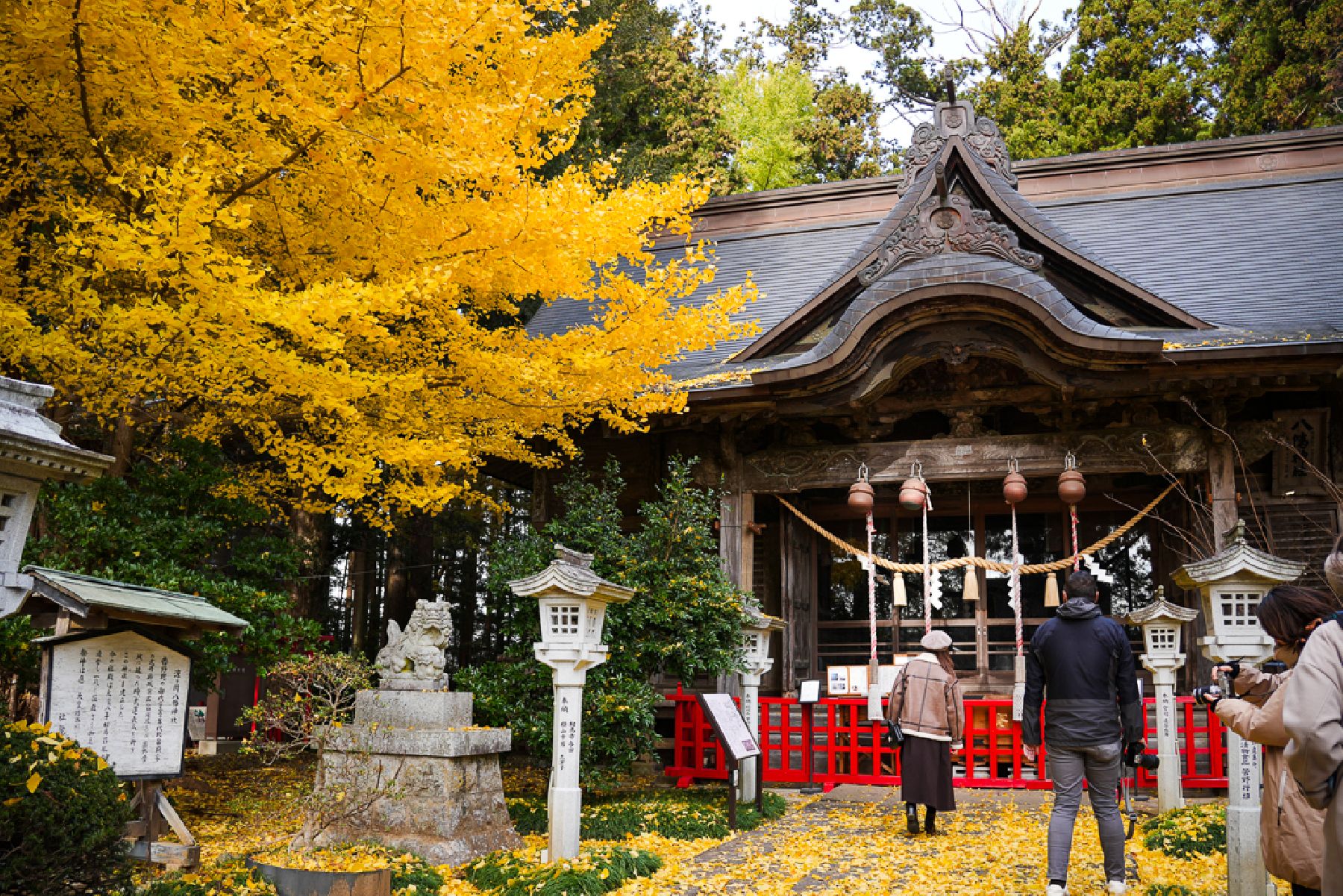
Founded over seven hundred years ago, Suzumigaoka Hachiman Shrine came under the aegis of the Soma clan in the sixteenth century, whereupon warlord Soma Masatane rebuilt its halls with zelkova wood. It was known as Soma Nikko at the time for being the northern equivalent of Nikko's Toshugu Shrine.Hachiman shrines are devoted to the warrior deity of the same name, seen historically as a protector of the nation, as well as someone prayed to for protections from illness and success in personal life.The shrine is an excellent trip both in spring, when the road leading to the shrine is sheltered with parallel rows of cherry trees, or in autumn, when the great gingko tree by the shrine building is a vibrant yellow.